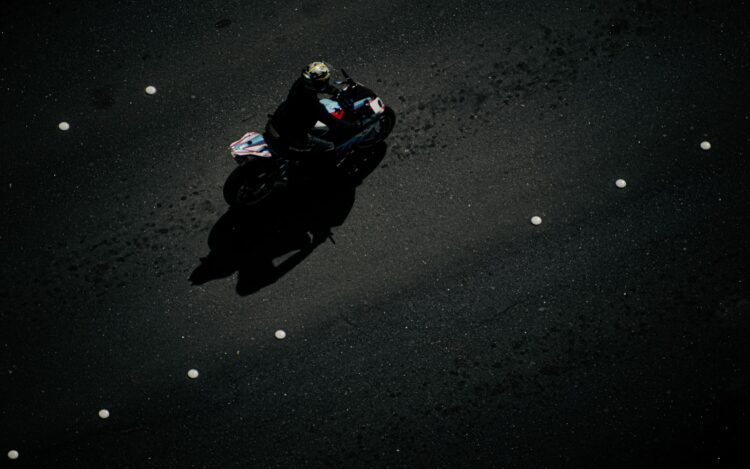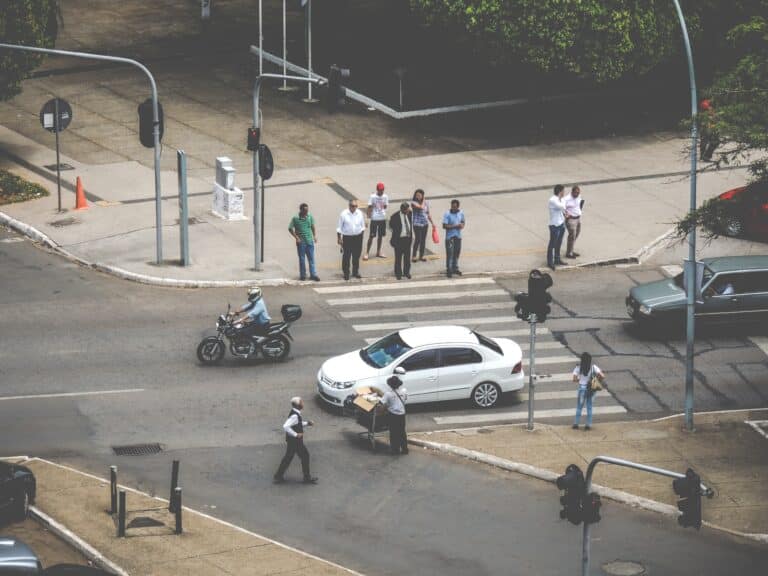Lane filtering or lane splitting is filtering past traffic at low speed around other vehicles on the road. For others, it’s what we call ‘lane splitting’ where a motorcyclist rides between lanes and rows of stopped or moving vehicles on the right side of the lane and faster than surrounding slow moving traffic.
In this article, we will discuss the concept of lane filtering in detail and how to perform it with safety.
What Is Lane Filtering?

Lane filtering is not new, but it is gaining momentum in some parts of the world. It is defined as allowing motorcycles to legally operate in between lanes of traffic or rows of slow-moving or stopped cars at intersections, thereby minimizing exposure to exhaust emissions and reducing the risk of being rear-ended while filtering.
A 2009 Australian University study by Dr. Clinton Jeffery suggests lane splitting reduces the risk of crashing (or coming close to crashing) while lane filtering. The US state of California has a law permitting motorcycle lane splitting in certain conditions when no other vehicles are present which proves this can be carried out safely under proper conditions.
Lane splitting should never be done when motorcyclists meet car drivers who turn right across riders’ paths since they will not have had an opportunity to see the rider.
Is Lane Filtering Safe?
While lane filtering is legal in some countries and states, it does not mean all riders should try it.
The most important element of safe filtering is the ability to do so safely, without putting yourself or others at risk. Ask yourself: Am I experienced enough? Do I know how to brake quickly if necessary? Is the traffic moving too fast for me to stop in time if someone hits me from behind?
If you answered “No” to any of these questions then avoid this practice until you can answer “Yes” – or restrict your filtering to low speeds and where the conditions are right:
Where Can You Lane Filter?
As a general rule, don’t try it unless there are no other cars around and you’re certain the traffic will stay slow and steady.
Lane filtering is legal in many parts of the world, but still not approved by all; it’s best to check the rules and regulations where you live before lane splitting – at least until more definitive studies can prove its safety.
The California vehicle code allows legal lane splitting in the same direction through the traffic lanes. The lane filtering law for motor vehicles is monitored by California Highway Patrol to prevent rear end collisions and motorcycle accidents in stationary traffic.
Riders in California are permitted to filter (split lanes) only when the posted speed limit is 30 mph or less and no more than 10 mph faster than surrounding traffic; motorcyclists must be traveling no more than 10 mph faster than traffic flow when splitting lanes at 40 mph or less (and never faster than 30 mph). It is also advisable that riders do not perform lane splitting activities if they are riding between two lanes of stopped traffic or the same lane. Lane splitting is legal in California and should only be done when there is enough space in between vehicles or on the left side of the lane.
What Is The Difference Between Lane Filtering And Lane Splitting?
Lane splitting and filtering are often confused due to their similarities. It’s important to emphasize that motorcyclists must not exceed 30 mph when passing cars.
To filter means you proceed at a speed lower than surrounding traffic while keeping pace with it;
To split means you exceed 30 mph under any conditions, but if traffic congestion is heavy and is less than 30 mph then you must also travel no more than 10 mph faster than traffic limits (i.e., 20 mph maximum in a 25 zone). If traffic is moving at more than 30 mph you may split lanes at a speed that is no more than 20 mph faster than traffic.
Riders should never travel in a space of less than a three-second gap from the vehicle in front and should always leave an escape route in case they have to brake quickly.
Lane splitting, if done within safety parameters, can be extremely beneficial for motorcyclists as it keeps them ahead of car exhaust emissions and out of drivers’ blind spots which makes filtering much safer. A 2009 study by Dr. Clinton Jeffery from the University of Sydney’s Transport & Road Safety Research shows riders who do lane splitting are 28% less likely to be involved in a crash or near-crash situation.
Conclusion:
Lane filtering is a relatively new practice and one that is still not approved by everyone. Riders must always remember they’re responsible for their own safety; it’s up to each individual rider to decide whether or not to try this practice.
We encourage riders who choose to attempt lane filtering to use extreme caution and carry out thorough risk assessments.
Motorcyclists should also be aware that not all motorists are aware of filtering and may attempt to change lanes suddenly (without indicating) in an effort to ‘squeeze past’ at the last minute. Have a safe ride!






